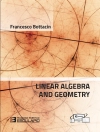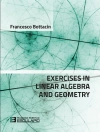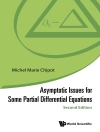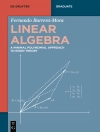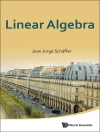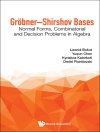The first part of this volume gathers the lecture notes of the courses of the “XVII Escuela Hispano-Francesa”, held in Gijón, Spain, in June 2016. Each chapter is devoted to an advanced topic and presents state-of-the-art research in a didactic and self-contained way. Young researchers will find a complete guide to beginning advanced work in fields such as High Performance Computing, Numerical Linear Algebra, Optimal Control of Partial Differential Equations and Quantum Mechanics Simulation, while experts in these areas will find a comprehensive reference guide, including some previously unpublished results, and teachers may find these chapters useful as textbooks in graduate courses.
The second part features the extended abstracts of selected research work presented by the students during the School. It highlights new results and applications in Computational Algebra, Fluid Mechanics, Chemical Kinetics and Biomedicine, among others, offering interested researchers a convenient reference guide to these latest advances.
İçerik tablosu
Part I.- Optimal Control of Partial Differential Equations: – Introduction to first-principle simulation of molecular systems.- Accurate computations and applications of some classes of matrices.- Introduction to communication avoiding algorithms for direct methods of factorization in linear algebra. Part II: Singular traveling waves and non-linear reaction-diffusion equations.- Numerical simulation of flows involving singularities.- A projection hybrid finite volume-ADER/finite element method for turbulent Navier-Strokes. – Stable Discontinuous Gelerkin Approximations for the Hydrostatic Stokes Equations.- A two-step model identification for stirred tank reactors: incremental and integral methods.- Variance reduction result for a projected adaptive biasing force method.- Modelling chemical kinetics in solid state reactions.- ASSR matrices and some particular cases.- A computational approach to verbal width in Alternating groups.- Improvements in Resampling Techniques for Phemotype Prediction Applications to Neurodegenerative Diseases.- An Aortic root geometric model, based on transesophageal echocardiographic image sequences (TEE), for biomechanical simulation.
Yazar hakkında
Mariano Mateos graduated from the University of Oviedo with a degree in Mathematics in 1995 and in 2000 completed his Ph D at the University of Cantabria, where he is currently a member of the research group ‘Optimal Control of Partial Differential Equations’. He is the author of several works on this subject and participates regularly in international conferences on Applied Mathematics. In 2016, he chaired the Spanish-French School on Numerical Simulation organized by Se MA and SMAI. Currently, he reads Numerical Methods at the Engineering School of Gijón as an Associate Professor.
Pedro Alonso is currently a Professor at the Department of Mathematics, the University of Oviedo (Spain). He received his Ph D in Mathematics from the University of Oviedo in 1995. His main interests include numerical linear algebra, error analysis, study of algorithms (complexity, performance, stability, convergence, etc.), high performance computing and mathematics education. He has several publications in international journals and communications for international conferences to his credit.





